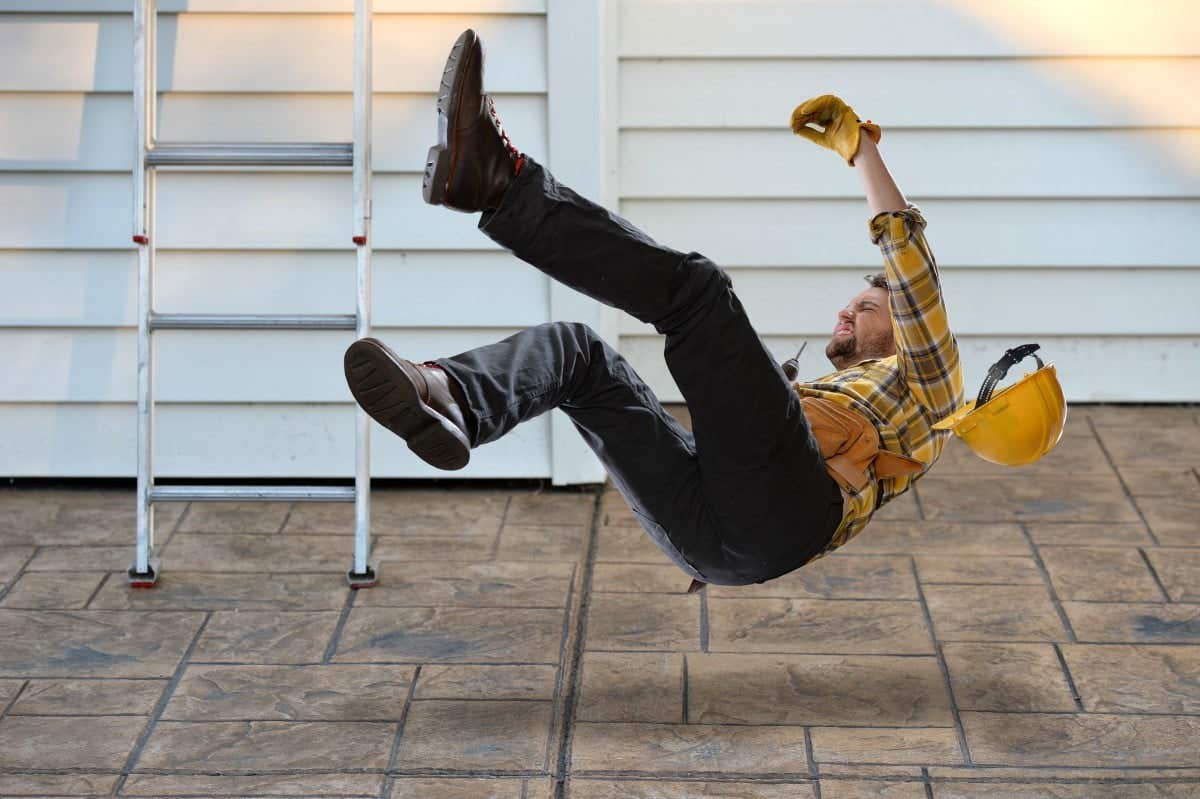Gait tracking analysis could predict and prevent falls in older adults
A new study from Stanford shows how tracking your steps now could help stop dangerous falls decades later—before they ever occur.

Stanford researchers show how gait tracking can predict fall risk before it happens, helping prevent injury in older adults. (CREDIT: CC BY-SA 4.0)
Falling is one of the biggest risks older adults face. As you age, your body doesn’t move the way it used to. You might lose strength, your vision may fade, and your balance becomes harder to maintain. These changes can lead to serious injuries. In fact, nearly one in three adults over 65 fall each year. These falls often result in broken bones, disability, or even death. In the U.S. alone, the cost of treating fall-related injuries exceeds $50 billion every year.
But what if there was a way to predict these falls long before they happen?
Published in the journal, Journal of Experimental Biology, researchers at Stanford University wanted to answer this question.
Led by Jiaen Wu, the team included scientists Michael Raitor, Guan Tan, Kristan Staudenmayer, Scott Delp, Karen Liu, and Steven Collins. Together, they aimed to find out whether it’s possible to detect hidden balance problems in people who seem healthy. If so, doctors could intervene early and prevent dangerous falls in the future.
Testing Balance Through Gait Analysis
To explore this, the researchers studied 10 healthy adults between ages 24 and 31. Each person walked on a treadmill at a steady pace while cameras tracked how their body moved. Ropes and motion markers connected to a harness helped capture small shifts in motion. At first, participants walked normally. Then, they walked again—but this time under more difficult conditions.
The researchers impaired balance using three tools: ankle braces, eye-blocking masks, and air jets that pushed against their legs. These additions made walking harder, simulating the effects of aging. Under these conditions, people’s steps became less predictable. Their stride widths and timing varied, and they seemed to struggle more with balance.
The scientists looked at six different walking measurements to see which best predicted a loss of balance. Surprisingly, only three metrics stood out. Step-width variability, step-time variability, and foot placement predictability were the most accurate. Each of these could detect balance issues with over 86% accuracy.
Related Stories
What made these metrics effective? Step-width variability shows how much your foot placement changes from side to side. Step-time variability measures how consistent your step timing is. Foot placement predictability checks whether your steps match your body’s center of mass. Together, they provide a clear picture of whether someone might fall.
Interestingly, the team also tested how people reacted to sudden pulls on their harness—a way to simulate real-life stumbles. However, these “perturbation tests” didn’t add much predictive power. Wu explained, “We thought that seeing how people recover from a pull would reveal more about their balance ability, but in this study, the normal walking data was just as informative in most cases.”
Why Personalized Baselines Work Best
Another key finding was how researchers evaluated the data. Most clinical tests today compare patients to group averages. But this can miss signs of decline in individuals who don’t match the norm. In this study, comparing each participant’s walking before and after impairment proved far more accurate than using a one-size-fits-all standard.
This finding supports the idea that everyone’s balance should be measured while they’re still young and healthy. Doctors could then use those personal baselines later in life to detect early warning signs. Wu’s team believes this could lead to earlier treatments, helping people avoid life-altering falls.
Traditional tools like the Short Physical Performance Battery (SPPB) are useful but have limits. Though it’s widely used to test balance, the SPPB often misses early-stage problems. Some people with serious issues still get perfect scores. This makes it harder to identify those who need help before a fall occurs.
The Science Behind Balance Metrics
Why do some measurements work better than others?
Step-width and step-time variability are tied to your nervous system’s control over walking. These changes often come from problems in muscles, joints, or senses. If something goes wrong in how your body moves or senses position, your steps become uneven. That’s why higher variability often means lower balance.
Foot placement predictability takes this idea further. It doesn’t just measure how your feet move—it compares that to where your body’s center of mass is going. This reveals whether your body is actively correcting for instability. A person who has to constantly adjust foot placement may be struggling to stay upright.
Other metrics, like the Lyapunov exponent and margin of stability, are less direct. The Lyapunov exponent measures how small differences in motion grow over time. The margin of stability estimates how far your center of mass is from the edge of your foot. These are useful in theory but didn’t perform as well in the study.
Similarly, center of mass displacement—especially during recovery from a push—has been used in past research. But here, adding data from those perturbations didn’t increase accuracy. It may be because only a small number of perturbations were used, or that people’s responses vary too much to give consistent results.
Making Balance Tracking More Precise
Traditionally, balance assessments use the same thresholds for everyone. But people vary in how they walk, even if they’re healthy. A very tall person might have different gait patterns than someone shorter. Age, activity level, and body shape also play roles.
Wu’s team tested the difference between using group-based thresholds and personalized ones. The personalized approach—comparing each person to their own baseline—proved far more sensitive in spotting balance impairments. This method reduced false alarms and better flagged real problems.
This could shift how doctors track aging in the future. Instead of waiting until a person reports issues, healthcare workers could collect walking data while patients are young. Those early numbers would act like a fingerprint. Years later, small changes could trigger preventive action, like balance training or mobility aids.
This approach is especially important because falls are rarely caused by just one thing. They result from a mix of lifestyle choices and internal abilities. For example, someone with poor balance who stays in bed may avoid falls. But a healthy person might fall while hiking on uneven trails. That’s why testing both movement and context is vital.
Balance training can help, especially with methods like perturbation training or the use of mobility aids. But the key is identifying who needs help early. With better measurement tools, healthcare providers can give the right support before a serious fall happens.
The Future of Fall Prevention
Wu’s research may be just the beginning. More studies are needed with larger groups and over longer periods. But the evidence so far points to a promising future. Gait analysis could become a routine part of check-ups. Devices might even track your walking at home, giving doctors real-time insight into your risk.
Artificially impairing balance in controlled labs, as this team did, also provides a valuable model. It removes the randomness found in real patients and makes it easier to study specific problems. Future work could combine these lab studies with real-world data to build smarter, more effective tools.
In the meantime, the study offers a strong message: fall prevention isn’t just about reaction—it’s about prediction. If we know what to look for, we can act early. For aging adults, that could mean staying active, independent, and safe for years longer.
Note: The article above provided above by The Brighter Side of News.
Like these kind of feel good stories? Get The Brighter Side of News' newsletter.



